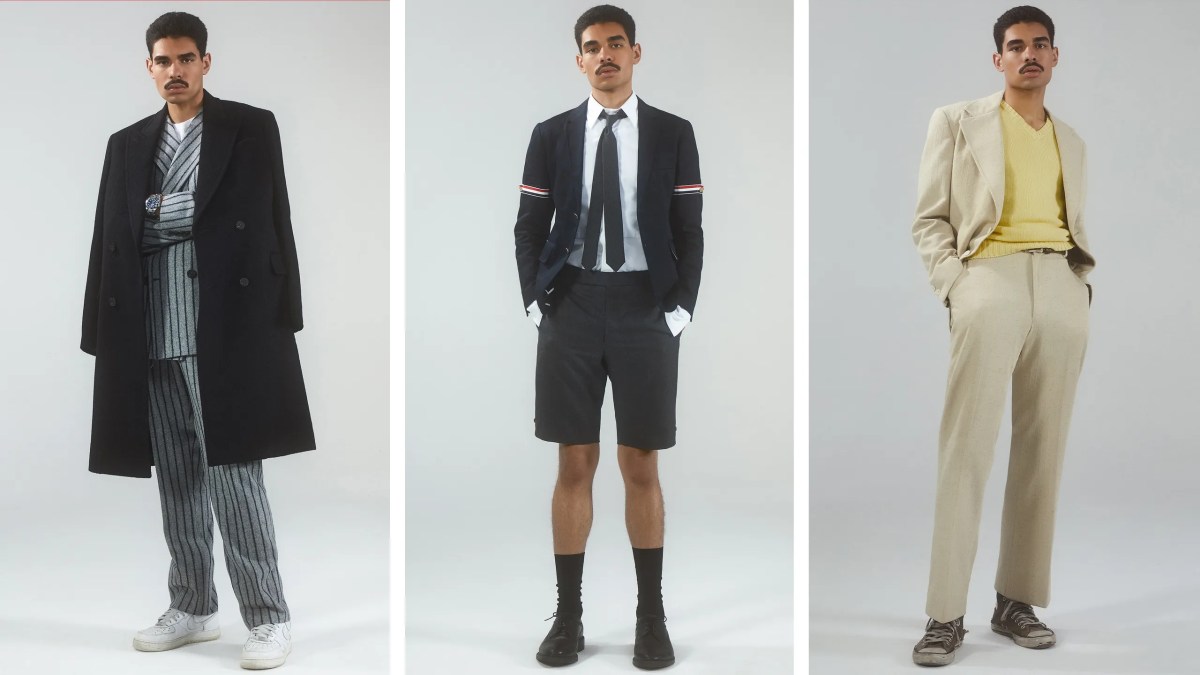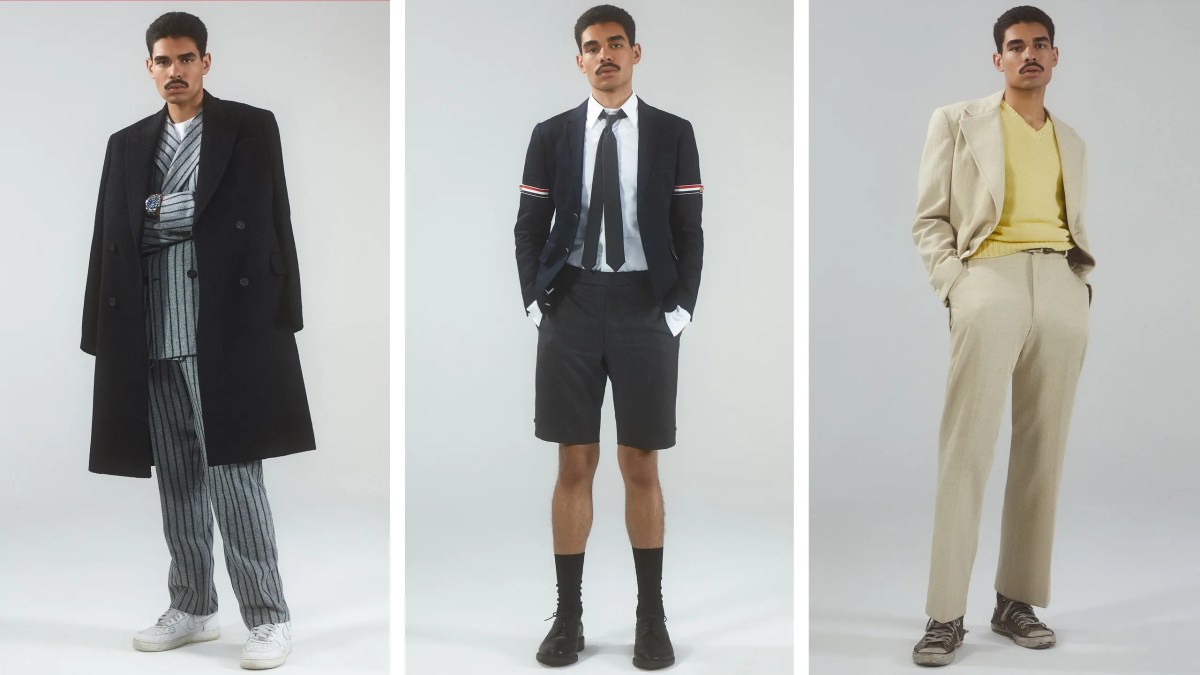Dress coat meaning goes beyond just outerwear; it’s a statement of style, history, and occasion. From the classic Chesterfield to the modern interpretations gracing runways, the dress coat holds a unique place in fashion. This guide unravels its intricacies, exploring its defining characteristics, historical evolution, and how to style it for various occasions.
We’ll delve into the distinctions between a dress coat and similar outerwear like trench coats and peacoats, examining the subtle nuances that set them apart. We’ll also cover proper care, maintenance, and the cultural significance embedded within this timeless garment, showing you how to choose the perfect fit and style to complement your personal aesthetic.
Understanding the Dress Coat: Dress Coat Meaning
The dress coat, a timeless piece of outerwear, transcends mere functionality. It’s a statement of style, a reflection of history, and a symbol of sophistication. This article delves into the world of dress coats, exploring their defining characteristics, historical context, and modern interpretations.
Defining “Dress Coat”
A dress coat is a formal or semi-formal overcoat, typically longer than a jacket, designed for warmth and style. Key characteristics include a tailored fit, high-quality materials, and often sophisticated detailing like notched lapels, welt pockets, and a structured silhouette. It’s distinct from casual outerwear in its level of refinement and attention to detail.
Examples of Dress Coat Styles
Several distinct styles fall under the dress coat umbrella. The Chesterfield, known for its velvet collar and typically single-breasted design, exudes classic elegance. The reefer coat, with its double-breasted closure and often peaked lapels, offers a nautical-inspired look. The overcoat, a more general term, encompasses various styles, often featuring a more relaxed fit than the Chesterfield or reefer.
Materials Used in Dress Coat Construction
Dress coats are traditionally crafted from high-quality materials chosen for their warmth, durability, and aesthetic appeal. Common choices include wool (cashmere, merino, and tweed variations), camel hair, and sometimes leather or suede for a more luxurious feel. The choice of material significantly impacts the coat’s drape, texture, and overall appearance.
Historical Context and Evolution of the Dress Coat
The dress coat’s history is rich and multifaceted, evolving from practical outerwear to a symbol of status and style. Early iterations served primarily as functional protection against the elements. Over time, tailoring and design evolved, reflecting changing fashion trends and social norms. The development of various styles like the Chesterfield and reefer highlights this evolution, with each style reflecting specific periods and influences.
Dress Coat vs. Other Outerwear
Understanding the nuances that distinguish a dress coat from other outerwear is crucial for selecting the appropriate garment for any occasion. Here, we compare and contrast the dress coat with similar items.
So, you’re wondering about a dress coat? It’s more than just a jacket; it’s a statement. Figuring out the nuances of a “dress coat meaning” can be tricky, but understanding the context is key. Check out this helpful resource on dress coat meaning to learn about the different styles and occasions where they’re appropriate. Ultimately, knowing the meaning behind a dress coat helps you choose the right one for any event.
Dress Coat vs. Trench Coat
While both offer protection from the elements, a trench coat is typically more utilitarian, characterized by its belted waist, epaulets, and often a more relaxed fit. Dress coats prioritize a more refined and tailored silhouette, focusing on sophisticated details over overt practicality.
Dress Coat vs. Peacoat
Peacoats, known for their double-breasted design and heavy wool construction, are traditionally associated with naval attire. While they can be formal, they lack the refined tailoring and often the length of a dress coat, which is generally designed for more formal occasions.
Dress Coat vs. Blazer
Blazers, while structured jackets, are significantly shorter and less substantial than dress coats. They serve as part of a suit or as a more casual layer, whereas a dress coat functions as a distinct outerwear garment, worn over other clothing.
Comparison Table
| Feature | Dress Coat | Trench Coat | Peacoat | Blazer |
|---|---|---|---|---|
| Length | Knee-length or longer | Knee-length or longer | Hip-length to knee-length | Hip-length |
| Fit | Tailored | Relaxed | Relaxed | Structured |
| Material | Wool, cashmere, etc. | Gabardine, cotton | Heavy wool | Wool, cotton blends |
| Formality | Formal/Semi-formal | Semi-formal | Semi-formal/Casual | Semi-formal/Casual |
Dress Coat in Different Contexts
The appropriateness of a dress coat hinges heavily on the context. Understanding its role in various settings is crucial for projecting the right image.
Role of a Dress Coat in Formal Settings
In formal settings like black-tie events or weddings, a dress coat, particularly a Chesterfield or a similarly refined style, adds a touch of sophisticated elegance to the overall ensemble. It complements formal attire and projects an air of refined taste.
Appropriateness in Semi-Formal Situations
Dress coats are also suitable for semi-formal occasions, such as business dinners, cocktail parties, or evening events. A slightly less formal style might be appropriate here, allowing for more versatility in the overall look.
Instances Where a Dress Coat Might Be Inappropriate
Wearing a dress coat to highly casual settings like sporting events or outdoor picnics would be considered inappropriate. The formality of the garment clashes with the relaxed atmosphere of such events.
Suitable Occasions for a Dress Coat
- Formal weddings
- Black-tie events
- Business dinners
- Opera or theatre performances
- Cocktail parties
- Formal galas
Styling and Maintenance of Dress Coats
Proper styling and maintenance are essential for preserving the quality and longevity of a dress coat. These practices ensure the garment remains a stylish and functional part of your wardrobe.
Styling a Dress Coat

A dress coat can be styled in numerous ways, depending on the occasion and personal preference. It can be paired with a suit for a classic formal look, or with more casual attire like dark denim and a turtleneck for a sophisticated yet relaxed style. The key is to balance the formality of the coat with the rest of the outfit.
Care and Cleaning
Cleaning instructions vary depending on the material. Wool coats, for instance, often require professional dry cleaning, while some materials might be suitable for hand-washing with specialized detergents. Always check the care label before attempting any cleaning.
Storing a Dress Coat
Proper storage is vital for maintaining the shape and quality of a dress coat. Use a garment bag to protect it from dust and moisture. Avoid hanging it on a thin hanger, which can stretch the shoulders. Opt for a wide, padded hanger to maintain the coat’s shape.
Selecting the Right Size and Fit
The fit of a dress coat is paramount. It should be comfortable yet tailored, allowing for layering underneath without feeling overly restrictive. The shoulders should fit snugly, and the length should ideally fall to the knee or slightly below.
The Symbolic Meaning of Dress Coats
Dress coats carry significant cultural and social connotations, evolving over time and varying across different societies. Their symbolic meaning extends beyond mere functionality.
Cultural Significance
In many cultures, the dress coat has been associated with wealth, status, and sophistication. Its presence in formal settings reinforces these connotations. The choice of material and style can also reflect cultural influences and traditions.
Depiction in Art, Literature, and Film, Dress coat meaning
Dress coats frequently appear in art, literature, and film, often portraying characters of high social standing or those seeking to project an image of authority and elegance. Their visual presence contributes to the overall narrative and character development.
So, a dress coat basically means a formal coat, right? Think of it like the ultimate power-up in a game – it’s the level-up your outfit needs for a fancy occasion. Speaking of power-ups, remember the classic asteroids video game ? That hyperdrive feeling is kind of like how you feel rocking a sharp dress coat; instantly more confident and ready to conquer the world (or at least, a fancy party).
Evolution of Social and Status Connotations
Over time, the dress coat’s social connotations have shifted subtly. While it remains associated with formality and sophistication, its accessibility has increased, making it a more inclusive item of clothing than in the past.
Reflection of Personal Style and Taste
The choice of a dress coat reflects personal style and taste. The selection of material, style, and color reveals individual preferences and aesthetic sensibilities. It allows for self-expression within the confines of formal attire.
Modern Interpretations of the Dress Coat
Contemporary designers continue to reinterpret the classic dress coat, incorporating modern trends and innovative techniques. This evolution ensures the garment remains relevant and stylish.
Contemporary Designers and Dress Coat Elements
Many high-fashion designers regularly incorporate dress coat elements into their collections, often blending classic tailoring with modern silhouettes and unexpected materials. This results in unique and contemporary interpretations of a timeless garment.
Influence of Modern Trends
Modern trends, such as oversized silhouettes, bold colors, and unconventional materials, influence the design and styling of dress coats. This leads to innovative designs that maintain the coat’s inherent elegance while embracing contemporary aesthetics.
Innovative Materials and Construction Techniques
Modern dress coats often utilize innovative materials, such as technical fabrics that offer increased water resistance or breathability, and sustainable materials that align with environmentally conscious practices. New construction techniques also allow for more streamlined silhouettes and enhanced comfort.
So, a dress coat’s meaning often depends on context – is it formal wear, a specific style like a Chesterfield, or just a fancy jacket? Thinking about it, choosing the right coat is a bit like a coin toss game – heads you go formal, tails you go casual. Ultimately, the dress coat’s meaning boils down to the occasion and your personal style.
Modern, Innovative Dress Coat Design
Imagine a modern dress coat crafted from a richly textured, recycled wool blend in a deep emerald green. The silhouette is slightly oversized, with dropped shoulders and a relaxed fit, yet maintains a structured elegance through its tailored details. The coat features large, patch pockets and a subtly asymmetrical closure, showcasing a contemporary twist on a classic design.
The lining might be a vibrant contrasting color, adding a playful element to the overall sophistication.
Conclusion
Ultimately, understanding dress coat meaning is about appreciating its versatility and enduring appeal. Whether you’re navigating a formal event or aiming for sophisticated everyday style, a well-chosen dress coat elevates your look. This guide has equipped you with the knowledge to confidently select, style, and care for your dress coat, allowing you to make a lasting impression.
Top FAQs
What’s the difference between a dress coat and an overcoat?
While often used interchangeably, a dress coat tends to be more structured and formal, typically made from finer materials. An overcoat is a broader term encompassing various styles, including more casual options.
Can I wear a dress coat casually?
Yes, depending on the style. A less formal dress coat in a neutral color can be styled casually with jeans and boots.
How do I clean a wool dress coat?
Dry cleaning is generally recommended for wool dress coats to avoid shrinkage or damage. Always check the care label for specific instructions.
Where can I find a well-made, affordable dress coat?
Check department stores, online retailers, and even secondhand shops for a variety of options and price points. Look for sales and consider investing in a classic style that will last.
